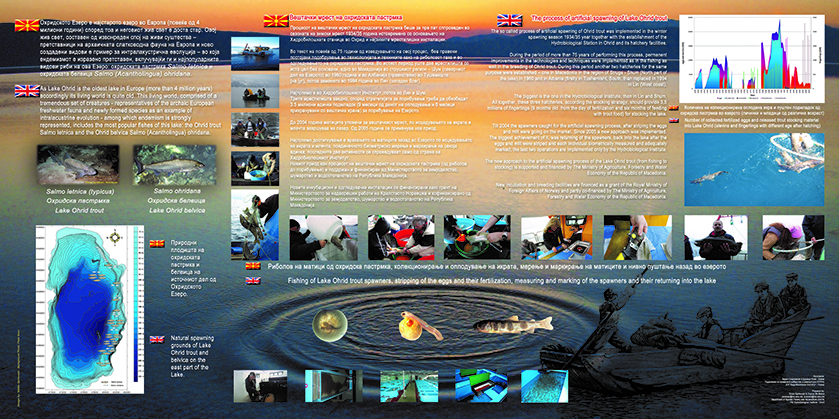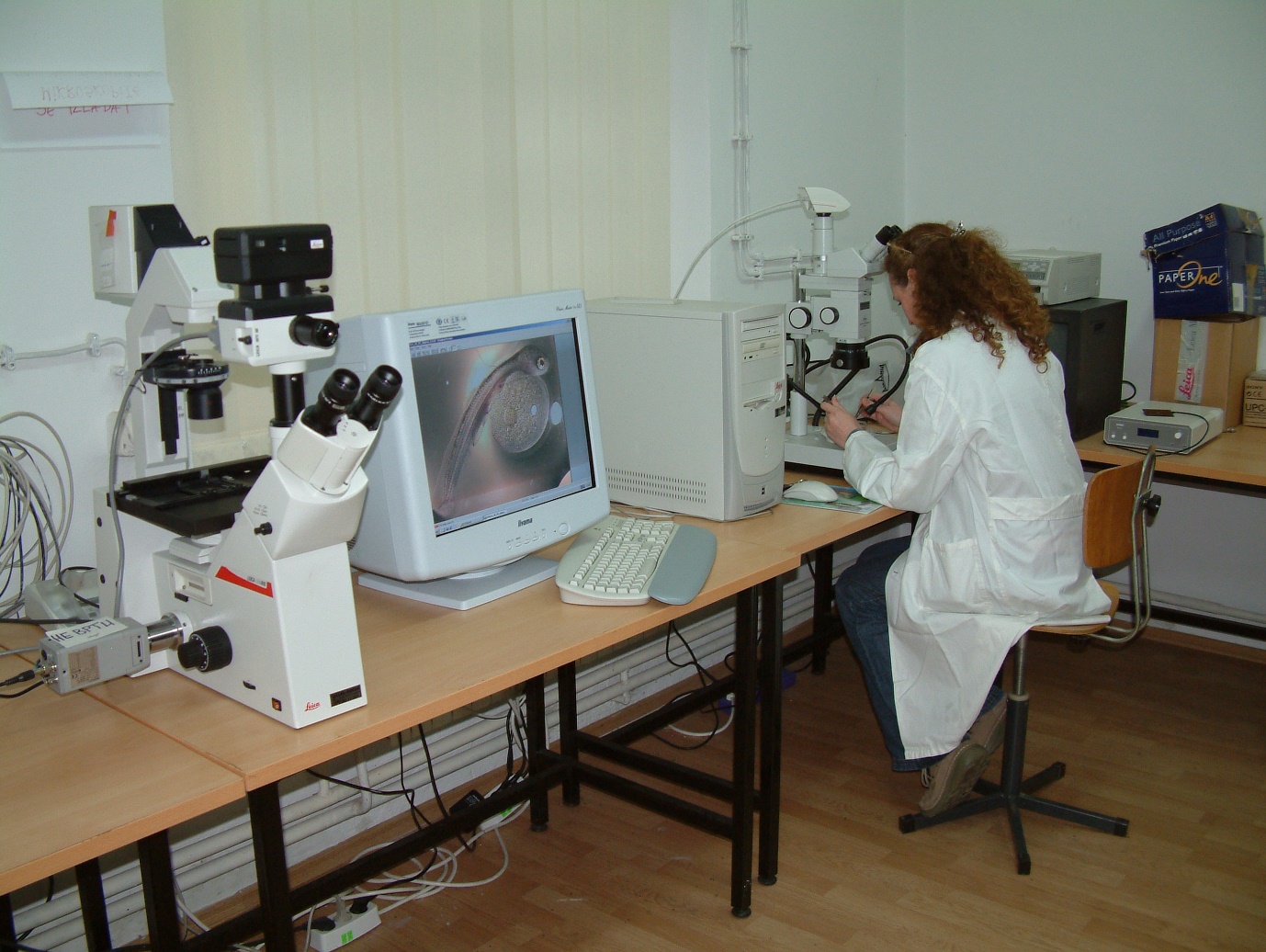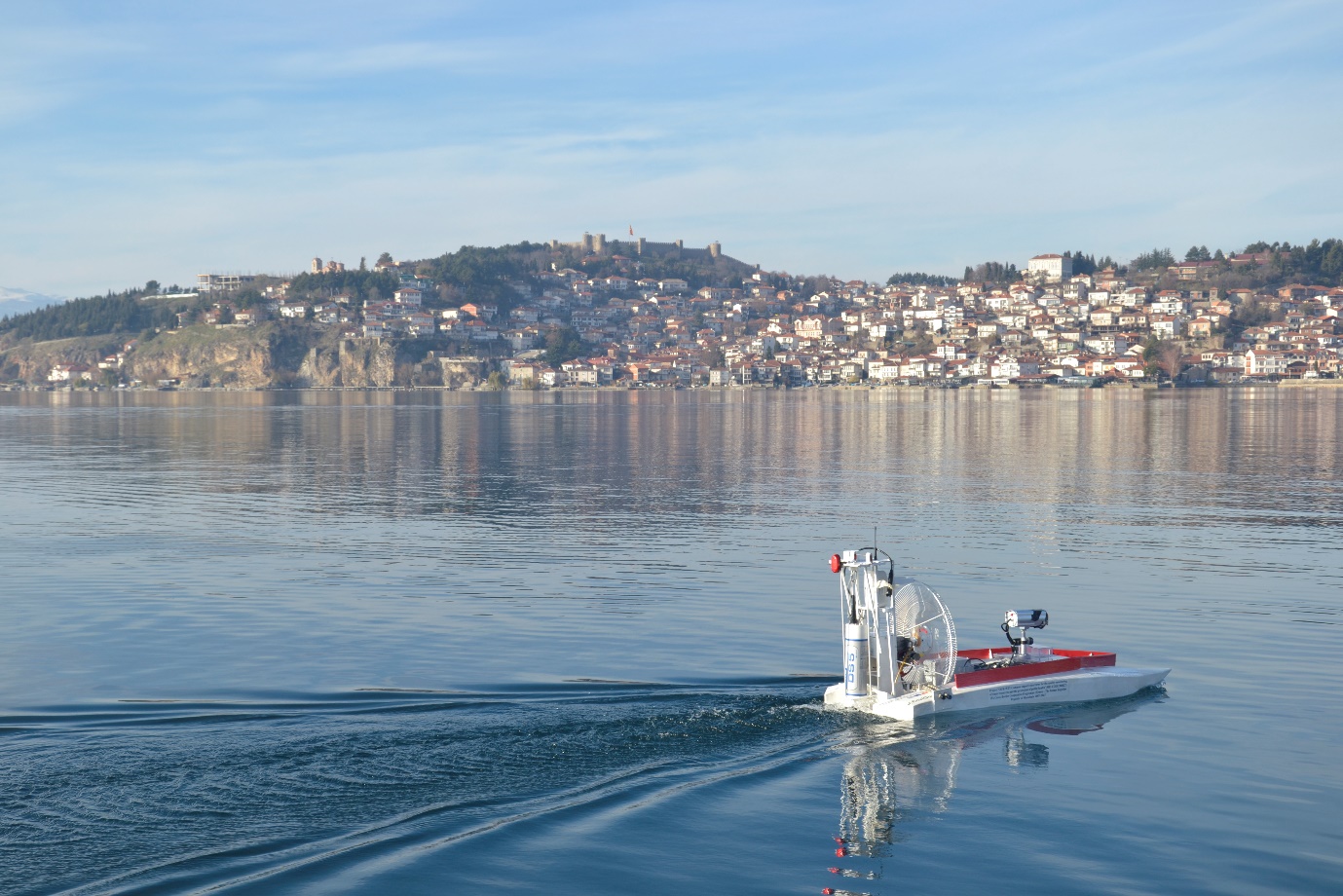Department of salmonid fauna, applied fishery and aquaculture (DAFA)
Hydrobiological Institute – Ohrid
Contact
Zoran Spirkovski
zoranspi@hio.edu.mk
Dusica Ilik-Boeva
dusicaib@hio.edu.mk
Phone: +389 46 269 838
Fax: +389 46 269 838
Address
Hydrobiological Institute – Ohrid
Naum Ohridski 50
6000 Ohrid
R. Macedonia
Description
The Hydrobiological institute in Ohrid, established in 1935, covers research subjects in limnology as in natural lakes (mainly), as well in reservoirs and rivers. The main occupation are the limnology of the Great Natural Lakes in Republic of Macedonia (Ohrid, Prespa and Dojran), with special attention to Lake Ohrid – the oldest one in Europe and the biggest and deepest in Macedonia. More specific subjects of research in the Institute are organized in the following departments: physico-chemistry(aquatic and geochemistry), microbiology (sanitary and ecological aspects), phytoplankton (algae and primary productivity), zooplankton (population dynamics and biomass), macro zoobenthos (population structures, habitats and biomass), macrophyte vegetation (population structures, habitats and biomass), cyprinid fishes, salmonid fauna; applied fishery and aquaculture, fish parasitology and molecular biology.
Since its establishment in the institute is included a salmonid hatchery and nursery with capacity of 5 millions of eggs, alevins or fingerlings of one of the endemic Lake Ohrid trout species (Salmo letnica, Karaman 1924) in sence of aquaculture of the endemic salmonids for restocking porposes at that period. During the eight decades of development of tools for freshwater species conservation and restoration the number of collected fertilized eggs and released fries was varying till number of 16 million in average at annual level. In certain periods this number was even bigger – exceeding 20 million. The most important moment till 2004 year is that all the caught spawners in average of 25 tons was going at the fish market. From 2005 year the stocking is with 2,5 million fingerlings at age of 9 months after fertilization, all the fished spawners are returned into the lake – “catch and release” method, with proof of their future survival confirmed by different tagging techniques www.youtube.com/watch?v=3B6-_kETjjA .
Regarding the developing processes of “artificial” spawning of the native salmonids various techniques were implemented like: sperm cryopreservation, laser treatment of the spermatozoids and fertilized and non-fertilized eggs, crossbreeding etc. Also cultivation of the outmost endemic salmonid Lake Ohrid Belvica (Salmo ohridana, Steind.1892) has been developed, but from biodiversity conservation aspect this isn’t implemented like standard process for lake’s restocking program.
Besides the hatchery activities other responsabilities of the Department of salmonid fauna; applied
fishery and aquaculture (DAFA) are population ecology, human impact (habitat changes and restoration in lakes and rivers; pollution impact – heavy metals, POPs; fishery impact), genetic radiation, hybridization – natural and induced for farming purposes, species conservation, fish and
fisheries monitoring, fishery management plans and strategies, etc.
DAFA is official registered reproduction center for wild freshwater fish species for R. Macedonia. From other hand Hydrobiological institute in Ohrid is the Authorized Institution for fisheries, which includes any kind of fishing in the national open waters (lakes, rivers and reservoirs) as well as fish farms control and supervision.
The Institute facilities (labs and officess) are spread on 2500 sqm and additionally 1200 sqm under fish hatchery and breeding facilities, 1500 sqm experimental aquaculture earth ponds, 300 sqm for boat house and 15000 sqm garden surface. Research vessel – 12 m research boat, fully equipped for sampling water, sediments and tissue samples. BOB2 (Boat over bloom) ROV. Fully equipped labs in all departments.
At present at the institute are employed 32 persons: 17 of them are scientific staff and the rest is
technical and administrative staff.
Direct collaboration and agreements have been established with a number of Universities and research institutions on a global scale and the researchers of HIO are directly involved and/or coordinate several international research projects as well as several national strategic research projects.
Main research lines:
– Lake Ohrid Annual Restocking Program of endemic trout species national and transboundary (since 1935).
– Conservation and restoration of endemic and endangered trout species (S. ohridana, S. typicus, S. aphelios, S. peristericus, S. macedonicus, etc.)
– Cryopreservation and laser induction
– PoP’s, heavy metals
– Fishery master plans (protection and utilization)




